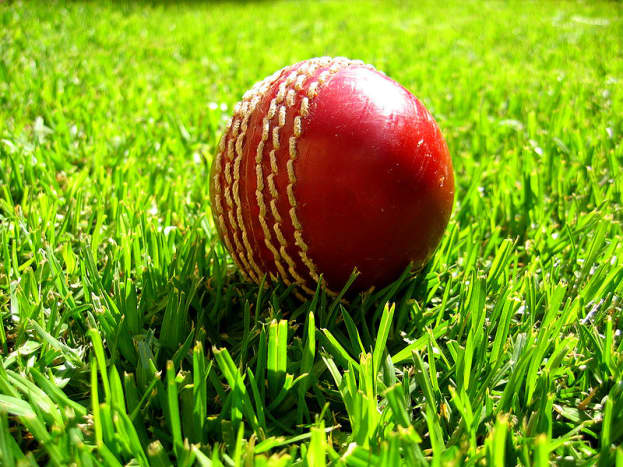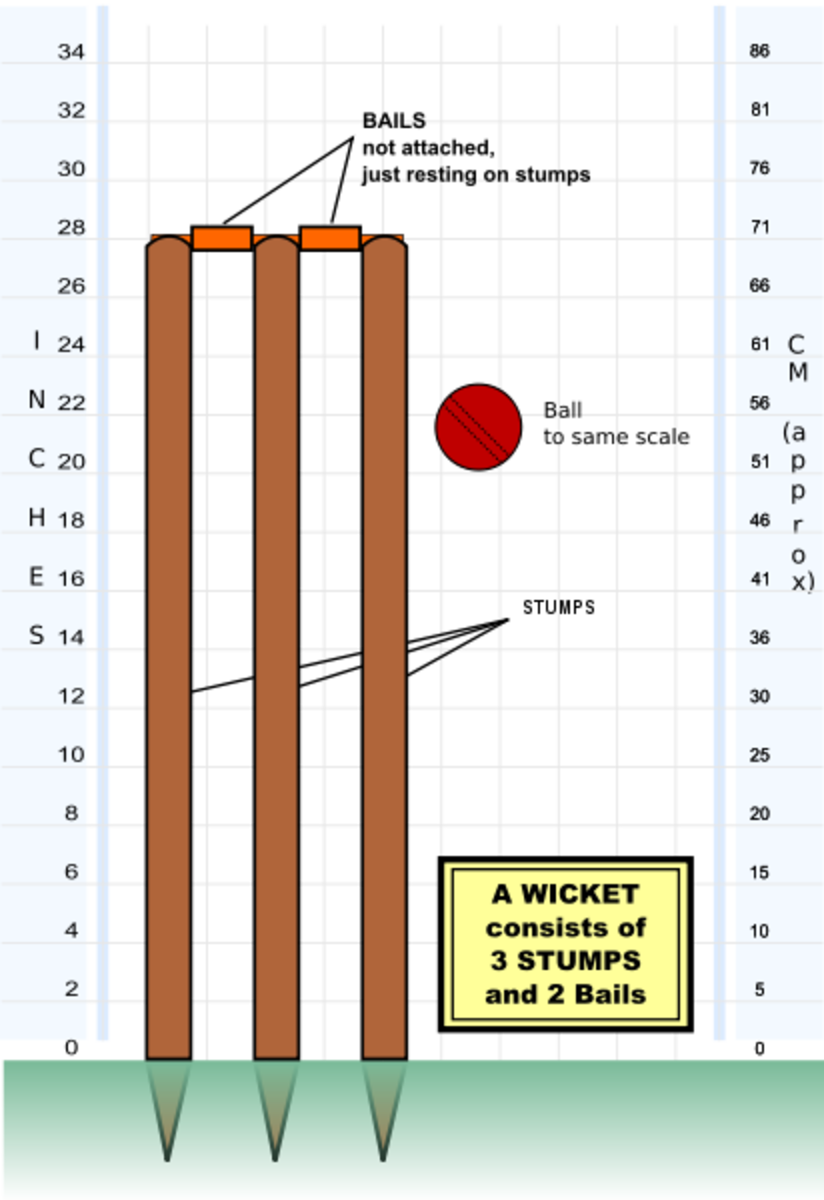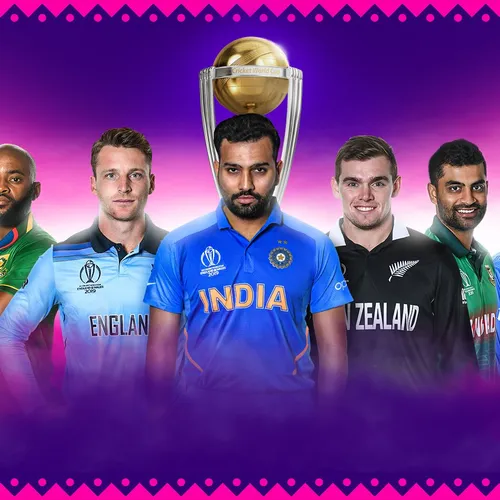
How to Become a Cricketer?
August 20, 2023
How To Teach Cricket To Kids & Beginners
August 20, 2023How Do You Play Cricket?
I have played cricket all throughout my childhood and still like to play on the weekends. Playing this sport is like having a complete body workout without going to the gym.
In this article, I’ll explain all about how to play cricket, what equipment is used, and the rules and regulations of the sport. By the end of this article, you’ll be ready for your first game.
What You’ll Need to Play
Here is a quick rundown of the equipment you’ll need to play cricket:
- Cricket bat
- Cricket ball
- Stumps
- Ground and pitch
Cricket Bat
The bat is the stick used to hit the ball to score runs. According to the rules, a bat can be no longer than 38 inches in length and 4.5 inches in width. It can weigh anywhere between 1 kg to 2.5 kg.
It is recommended that you use a lighter bat when you are starting out. As you get used to it, you can go for a heavier bat. Most players use a bat that weighs around 1 to 1.8 kg. The choice of a lighter or heavier bat is left up to the player.

Cricket Ball
The cricket ball is round in shape and is usually red or white in colour and made of leather. A red ball is used in day matches or longer games (such as a five-day match), while a white ball is used in shorter format matches or in day/night matches. (Learn more about the different types of cricket matches here.)
I actually recommend not playing with a cricket ball for your first game. They can be quite heavy. A beginner may want to use a tennis ball for their first match. In fact, many in India, and I’m sure in many other countries as well, play with a tennis ball or rubber ball.
If you just want to play for fun, a normal tennis ball is recommended. You can use a traditional leather ball once you get comfortable with the game and want to go to the next level.



This type of ball used in test matches.
Ed g2s, CC, via Wikimedia Commons
1/2
Stumps
Stumps are wooden sticks that are beaten into the ground. They support two bails at the top and form a wicket. There are two wickets placed on opposite sides of the pitch. The stumps should be no longer than 28 inches in height and 9 inches in width.
If you can’t afford to buy proper stumps, you can use any type of stick or lumber to create a makeshift wicket.

Ground and Pitch
The ground for cricket is spherical in shape. The part where the batsman plays is known as the pitch. In international cricket, the pitch is in a rectangular shape and measures 20 meters in length and 3 meters in width.
The quality of the pitch is one of the most important elements of the game. It impacts how the ball moves on the field as well as how you would bat in the game. Some pitches are dry and hard, which can help fast bowlers. Some pitches may be more favourable for batting. Others may favour spin bowling.
The pitch is marked in various places to go with different aspects of the game. Wickets are placed at both ends. At the bowler’s side, there is a bowling crease marked off that is eight feet and eight inches in length. The bowler’s popping crease, which is the area parallel to the bowling crease, is where a bowler should remain inside when they release a ball.
As a newbie, you should find the nearest ground to play in. There is no need for any markings when you are starting out. Stumps and a bowling crease should be enough. If you’re interested, check out this article on the largest cricket grounds in India.



A cricket pitch
Common, CC, via Wikimedia Commons
1/2
Important Aspects for Playing Cricket
The following are the basic mechanics of the sport.
- Teams
- Batting
- Bowling
- Fielding
- Umpire
- Captain
Teams
Cricket is a team sport with an equal number of players on either side. At the start of the game, a coin is tossed and the team winning the toss has the opportunity to choose to bat or bowl. International matches consist of 11 players on either side.

Batting
Batting refers to hitting the ball to score runs. The goal is to score as many runs as you can so that the opposing team can’t get past your total. The first two batters will be on the field. As one gets out, or dismissed, the other team members will follow until no one is left to bat or the overs are finished.
The basic idea is to hit the ball as far as you can and get runs. But hitting every ball will not be helpful because that approach can get you out by being caught or bowled. There are many techniques that you can use to make yourself a better player. Some tips on basic cricketing shots are explained in the video below.
Bowling
The fielding team will bowl the overs and try to restrict the batting team from scoring. In international cricket, there are 90 overs that should be bowled in a day for a five-day match. A one day match has 50 overs per inning while a T20 match has 20 overs.
An over is a collection of deliveries that a bowler bowls. An over is completed when a bowler bowls six legal deliveries. If a bowler bowls a wide or a no ball, it is counted as an extra and it has to be re-bowled.
As a bowler, you’ll have to get wickets. This means that your job is to get the batsman out. There are several ways a batsman can be out, which will be discussed further below.
When you are starting out, you don’t have to play a match of 40-50 overs. You should start with less; a match with seven overs is a good starting point. You can finish the match within 30 minutes. With these rules, you can play more games and each player on the team will get adequate time to experience various aspects of the sport, such as batting and bowling.
Ways a Batsman Can Get Out
| Getting Out | Explanation |
|---|---|
| Caught | Batsman hits the ball with the bat and a fielder catches it without touching the ground. |
| Bowled | If the bowler’s delivery hits the stumps and the bails are dislodged, then the batsman is out. |
| Run Out | If a fielder hits the stumps with the ball and the batsman is not able to complete the run, the batsman is out. |
| Stumped | This is similar to a run out. The difference is that the wicketkeeper removes the bail when a batsman moves forward to hit the ball and misses it. |
| Leg Before Wicket/LBW | If the bowl touches any part of the legs, then it is LBW. The ball should also be pitched in line and within the height of the stumps to be judged as LBW. |
| Obstructing the field | This is very rare. If a batsman is obstructing the field (by action or words), they can be ruled as out. |
| Hit Wicket | This comes in effect when a batsman dislodges his own stumps, knowingly or unknowingly. |
| Hitting the Ball Twice | If a batsman hits the ball twice, they are out. |
| Handled the Ball | If a batsman touches the bowl with their hands, they are out. |
| Retired Hurt | If a batsman gets injured in the process of his play, they are retired out. A batsman can resume the innings if he feels better but only with the consent of the other team’s captain. |
| Timed Out | A batsman should arrive at the crease within 3 minutes after the departure of his partner. Otherwise, they are timed out. |
Fielding
The team that is bowling is also responsible for fielding the ground to prevent runs from getting scored. Most successful teams will have excellent fielders. For example, the South African international team is great as a fielding unit.
Spread the field on all sides and don’t stand at the position near the batsman. Standing nearby without a helmet can be extremely dangerous. Don’t try to fly and catch the ball. You will likely injure yourself. Try to judge the ball and then field it. To be a great fielder, always keep your eye on the ball.
Different Fielding Terms


Umpire
An umpire is necessary to conduct the game. They are the ones who make decisions on the field, such as giving a batsman an out, imposing a penalty, or dismissing the game if it rains.
If you don’t have a specific person for the job, then anybody from within your team or the opposing team can become an umpire. Cricket is a gentleman’s game, so respect the decision of the umpire and play in the spirit of the game. And as they say, the umpire’s decision is the final decision.
Expanation of Umpire Signals
| Umpire’s Decision | Explanation |
|---|---|
| Out | Umpire raises his index finger to indicate that the batsman is out and that they should leave the field. |
| Four | By waving their hands from the left to right in front of the chest, four runs are scored. |
| Six | Raising both index fingers above their head indicates that six runs have been scored. |
| Bye | The umpire raises one hand with the palm open above their head. |
| Leg Bye | The umpire raises one knee and touches it. |
| One Short | If a batsman runs a short run, then it is signaled by tapping their shoulder with their fingers. |
| Wide Ball | By stretching both hands horizontally. |
| Dead Ball | By crossing and uncrossing both hands below the waist. |
| No Ball | By stretching a single hand horizontally. |
| Cancel | This is signaled when a batsman is not ready and the ball is bowled. It is shown by crossing both hands and touching the shoulders. |
| New Ball | There are often times situation when the ball is changed. A new ball is suggested by holding the ball with a raised hand and showing it to the players. |
| Penalty Runs | If a team or a player indulges in any misconduct, then penalty runs are awarded. This is done by touching the shoulder with a hand to give penalty runs to the bowling side. If the hand is tapped, the runs are awarded to the batting side. |
Umpire Signals in Cricket

Captain
Unlike other team sports, the captain plays a very important role in cricket. They are responsible for all that is happening with their team on the ground. The coach can only plan outside the ground. On the field, it’s the captain who makes the calls.
How to Play Your First Cricket Game: Simple and Easy Steps
So you are about to play cricket for the first time. Here is a quick guide to help you enjoy your first match.
- You have already completed the first step by reading this article.
- Buy or arrange the necessary equipment that you’ll need to play. A bat and ball is all that is required.
- Gather your friends and make two teams.
- Toss a coin to decide which teams chooses their position.
- If you win the toss, decide if you want to bat or bowl. Most of the time, when I win the toss, I choose to bat. Batting is the most enjoyable part of this game. I may be biased on this one but that’s how I feel.
- Make as many runs as you and your team can make.
- Bowl and restrict the opposite team from scoring more than you.
- If you are successful in scoring and fielding, hurray, you have won the match!
- How about playing one more!
- Start your next game.
© 2012 Kannan
Comments
yuvraj sharma on August 06, 2020:
I will try
Hujuball on January 30, 2020:
I feel retarded but I tried to hard to understand this but this “sport” just makes no sense
Jigyasa kasgyap on May 26, 2019:
Yes it’s too easy too learn
Thanx
For providing it with simple way…
Zia Uddin from UK on September 15, 2018:
Very informative, great read.
Rajan on October 03, 2015:
Simply step into Indian Guli Cricket you will learn faster…
Hisham on April 15, 2015:
I am an begginer and I am an spin baller and fast bowler,I want to be an all-rounder Thus this site helped me with it ! Thanks for the tips
Kannan (author) from Mumbai on February 01, 2012:
@dinkan53 Thanks for stopping by.
dinkan53 from India on February 01, 2012:
good work, this is an excellent hub for beginners and your way of explanation is perfect. Marked as useful.
Kannan (author) from Mumbai on February 01, 2012:
@Shake Shah Great that you liked it. Thanks.
Shake Shah from Manjeri on February 01, 2012:
nice work kannanwrites. voted up!!



